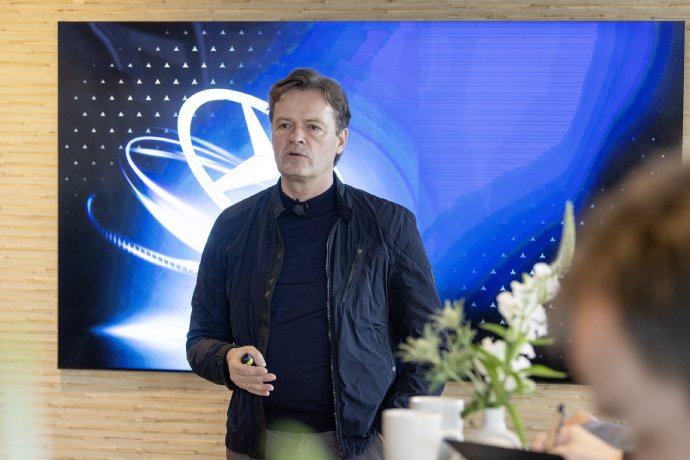
At the Auto Shanghai 2025, the Korea Automobile Journalists Association hosted a virtual interview with Markus Schäfer, Chief Technology Officer (CTO) of Mercedes-Benz. Schäfer shared insights into the company’s latest technological strategies and around 20 new models expected to launch over the next 20 months. He focused in particular on Mercedes-Benz’s future direction in key areas such as electric vehicles, software-defined vehicles (SDVs), and autonomous driving, starting with the new CLA model.

How does Mercedes-Benz assess China’s electric vehicle technology, and what’s the company’s response strategy?
China is the world’s fastest-growing electric vehicle market and is highly advanced in terms of technology. We are closely monitoring the market and tailoring our strategies accordingly. Through our EQXX project, we’ve concentrated on developing high-efficiency EV technologies. As a result, we’re introducing the CLA long-wheelbase model, which boasts a range of 866 kilometers and an energy consumption rate of 10.9 kWh per 100 kilometers. We expect this to set a new benchmark in the Chinese market.
What are the specifications and supply structure for the LFP battery in the CLA?
The CLA’s battery has a 58 kWh capacity. While official range certification is ongoing, we’re confident it will exceed 310 miles (500 km). We source these batteries using a modular approach, not just from China but also from facilities in Hungary and France. It’s worth noting that for LFP batteries specifically, we currently rely heavily on Chinese suppliers.
How does Mercedes-Benz collaborate with China on battery technology?
Battery technology is developed based on Mercedes-Benz’s own research, and then produced through collaboration with global partners. We work with companies in China, South Korea, Europe, and other regions, actively implementing a local for local strategy—sourcing components within the market where the vehicle will be sold. This helps us enhance quality while improving cost-efficiency.

What’s the significance of the Chinese market in Mercedes-Benz’s electrification strategy?
China, with its strong technology and price competitiveness, plays a vital role in executing Mercedes-Benz’s global strategy. We operate R&D centers and production facilities locally, and are also developing next-generation technologies like solid-state batteries, Drive Pilot (autonomous driving system), and solar coatings in collaboration with our global hubs in Germany, South Korea, and other regions.
Will the MMA platform be applied to other models in the future?
Absolutely. The MMA platform’s modular design allows us to apply it beyond the CLA to various other models. Its components, including the MB.OS operating system, electric powertrains, and battery systems, are scalable. This flexibility enables us to integrate the platform across a wide range of future vehicle types.
What is your response to criticism that the rollout of Level 3 autonomous driving has been slow?
Level 3 autonomy represents a critical shift in responsibility from human drivers to the vehicle itself, so comprehensive technical and legal preparedness is essential. Mercedes-Benz has already commercialized Level 3 technology in Europe and the United States. We plan to launch in China as soon as relevant regulations are established. We expect testing to be possible within the next 12 months in China, and foresee a global acceleration in the adoption of Level 3 technology.























